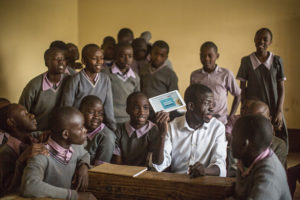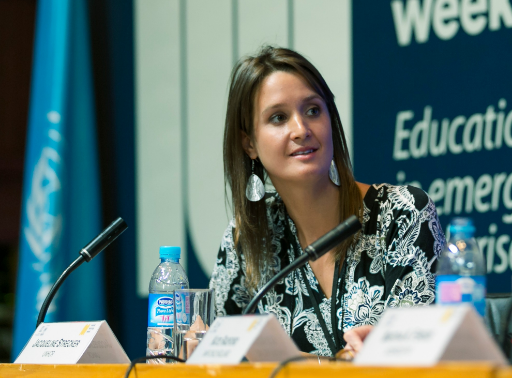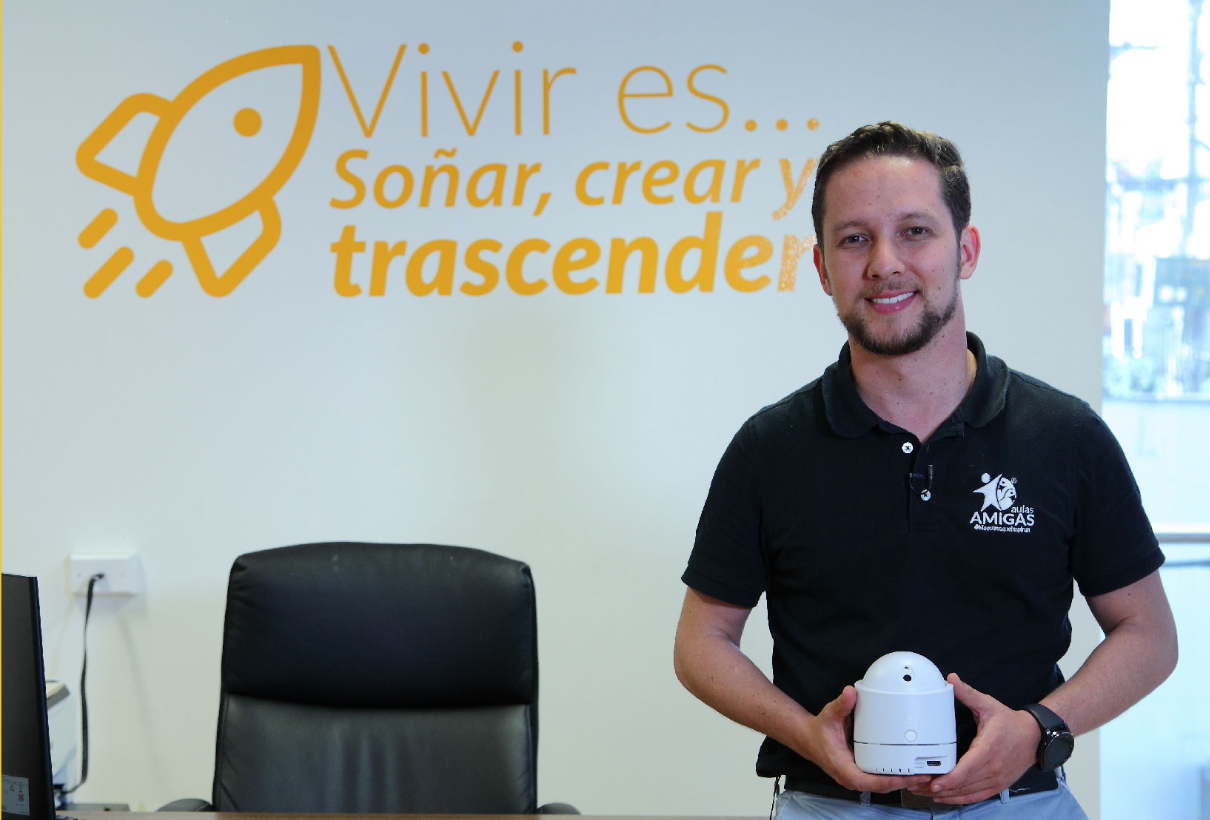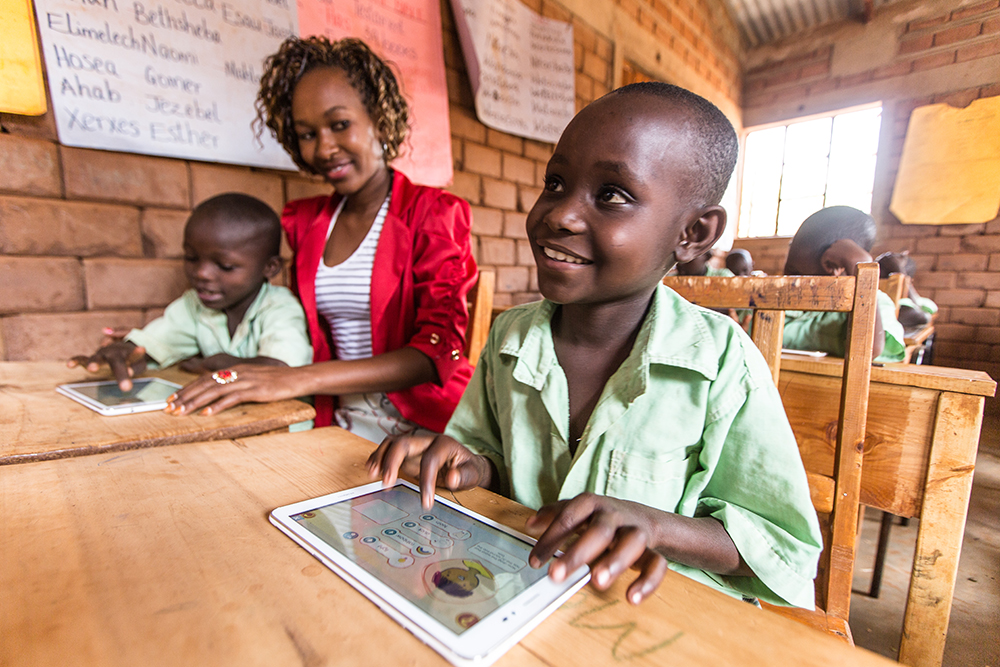Artificial intelligence and data science
They beat us at almost every game, identify our faces, tell us where to go, recommend what to listen to, watch and read, diagnose illnesses and now, as well as learning and imitating, they are also capable of creating. The boundaries of artificial intelligence and data science are being pushed a little bit further every day and further than we could have imagined just a few years ago. Almost all sectors have embraced this technology and education could not remain on the sidelines. The potential contributions of AI to education are vast and promising.
In this interview, Carlos Martínez Miguel, global director of IoT (internet of things), big data and artificial intelligence solutions and services at Telefónica Tech explains, among other things, the relationship between artificial intelligence and data analytics, how to avoid the risks involved in the application of this technology and what role it can play in the future of education.
However, and as Wayne Holmes, UNESCO advisor on education and AI, tells us, we must work to improve and enhance teacher qualifications, especially in vulnerable settings.
Teachers’ digital competencies
Integrating technology into education comes with the challenge of training a new professional, a new teacher who knows how to incorporate these technologies into their pedagogical practice in order to promote learning in their students. Transposing outdated pedagogy to digital will not bring about the transformation we need in education. This is because, according to Wendy Kopp, founder and CEO of the international organisation Teach for All, “technology is the easy stuff. What’s difficult is developing ourselves and the teaching profession so that we know how to make the best use of this technology and ensure the children get the most out of it.”
The thing is, as Lùcia Dellagnelo, director of the Brazilian Innovation Centre for Education puts it: “Technology has to emerge to transform pedagogy, to allow the teacher to perform new roles, mediator roles, to support the students’ development and construction of knowledge, instead of being a mere transmitter of content, a conveyor of information to students”.
In this interview, we talk to this education and technology expert about what these connected schools should be like, what the role of teachers should be in this new education and what competencies they need to develop in order to become digital teachers. We also spoke with her and other experts, whom the ProFuturo Observatory brought together at the event “Digital teachers. The assessment of teachers’ digital competencies as a tool to meet the challenges of the classrooms of 2030”, in this post you will learn how to measure and assess these competences in order to guide their professional development: the challenges of assessment, digitally competent schools, cascade training, teacher involvement and motivation… In this post you can read about all these topics in more detail.
Education and technology: the perfect team to fight the divide and inequality
The pandemic showed us the great power of technology to accelerate learning and make it more accessible. For example, it enables differentiated learning tailored to each student’s needs, and ensures that everyone has constant access to learning.
However, we also know that, if not correctly blended, technology does not improve learning and may even widen existing inequalities. How can technology be used to overcome challenges such as the access, quality and equity gaps? What are the main risks and how can we prevent them? How can technology be appropriately incorporated into education systems in vulnerable environments? We talk about all of this in this post about the GEM Report 2023, focusing on the role of technology in education.
Here, Robert Hawkins, global director of education technology and innovation at the World Bank, talked about the five basic principles that every policy-maker should keep in mind when planning public policy in this direction, which can be summarised as: asking why, at what scale and for all, to empower teachers, engage the ecosystem and be data-driven.
Personalisation of learning: the eternal dream of education, made easier with technology
Since Rousseau unwittingly became one of the first theorists of personalised learning in 1762 with his work Emile, this approach has taken a great leap forward thanks to the development of information technologies (ntelligent tutoring systems, free access to numerous learning platforms, methods using computers to adapt the complexity of content to users’ needs)…
At the ProFuturo Observatory we have talked a lot about personalised education. In the post Personalised learning: the great dream of education we tell you what this approach to learning is and how it can be a great tool for education in vulnerable environments.
Once its origins and fundamental elements have been established, in this post we will look at three ways of personalising learning in the classroom: flipped learning, challenge-based learning and place-based learning. If you read it, you will know what each of these methodologies consists of and what their main advantages are.
And, of course, we had to talk about personalised learning and technology. Thus, in Adaptive learning in five questions we talk about some of the keys to this method of instruction which, with the invaluable collaboration of artificial intelligence, can take adaptive learning to another level.
Finally, and to demonstrate that in this Observatory we do not only theorise, in Putting personalised learning into practice we tell you about three interesting experiences that implement flipped learning, challenge-based learning and place-based learning in the classroom. We are referring to the Crab Project, the 2030 Club and the Forest Schools. Don’t miss them.

Critical, safe, secure and responsible digital citizenship
Is knowing how technology works the same as knowing how to use technology? Are our children truly digital natives? How can they develop a positive digital identity? Equipping students with the tools and training to become good digital citizens should be one of the key subjects in the educational debate. But is it? Are we really aware of its importance? Are we teaching digital skills well?
Experts agree that the main problem is not technology, but the way in which the 21st century citizen is being educated. Young people must acquire digital skills and learn to use technology safely, ethically, critically and responsibly. Some studies have shown that while young children (digital natives) are fluent with new technologies, they lack the technical, critical and social skills needed to deal with the dangers they present.
In this article, we have told you what it means to make a critical, safe and responsible use of new technologies and what a teacher should do to encourage and promote it. And in this one, we bring together some practical resources for teaching the little ones to be good digital citizens.










